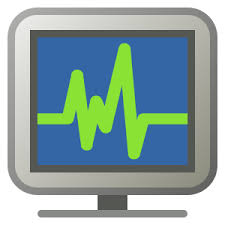Monitor is the most used output device of your computer. Originally known as the Visual Display Unit, it is can be regarded as the communication platform for the user and computer. We often find terms related to the screens which we may or may not have knowledge of, like the screen resolution, aspect ratio, dot pitch and so on. Hence, in this article we present to you various performance parameters of a computer monitor.
Performance Parameters Of A Computer Monitor :
Aspect Ratio: Aspect ratio is one of the parameter which talks about the size of the screen. Generally we find screens with aspect ratios of 4:3 or 16:9 or 8:5. It is the geometric relation between width and height. You can read more about it here: What Aspect Ratio Means.
Contrast Ratio: Technically, it is the ratio of luminance of the brightest color (say white) to the darkest color (black) that the computer monitor can produce on its screen. Simply the higher the value of the Contrast Ratio, the better will the image quality and hence the experience. More than any other single performance parameters of a computer monitor, Contrast Ratio is the most important of all.
Screen Resolution: It is the number of pixels that are present in one particular dimension of the screen. The most common screen resolution is the 1024×768. It means there are 1024 pixels along the width of image and 768 pixels along the height. The higher screen resolution the computer monitor supports, the better will be the image clarity and sharpness. Also this parameter depends on the Aspect Ratio to determine the shape of the pixel (square or rectangular).
Refresh Rate: Refresh rate is the number of times the screen is illuminated in a second. This was an important performance parameters of a computer monitor when CRT monitors were dominant. But it actually doesn’t matter much in case of LCD monitors. This is because the pixels in LCD are always ON irrespective of the refresh rate. The 60Hz or 75Hz you see by the side of your screen resolution is the refresh rate.
Response Time: It is the time taken by any particular pixel in a display to change from active (white) to inactive (black) and again back to the active state. Though this time is usually in milliseconds, the smaller the value it has the better will be computer monitor’s performance.
Screen Size: This is one common term at which many people go wrong. It is actually different in different types of monitors. For a CRT monitor, the screen size is measured diagonally including the outer covering around the screen. But for a LCD or LED display it is only the display’s diagonal length that is considered. It is considered to be the physical image size.
Viewing Angle: It is the maximum angle at which the entire screen in visible without any flaws in image quality. A step away from this viewing angle makes the image on screen appear blurry or dull. So computer monitor with a good viewing angle is always a smart choice.
Power Consumption: The power consumption is also a very important performance parameter of computer monitor. It is measured in watts. The smaller it is, the better it will be for you. It may not affect the performance but it is always better to go for a low power consuming monitor.


